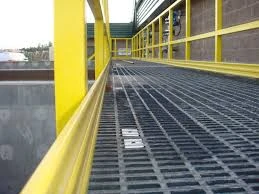
-
 Afrikaans
Afrikaans -
 Albanian
Albanian -
 Amharic
Amharic -
 Arabic
Arabic -
 Armenian
Armenian -
 Azerbaijani
Azerbaijani -
 Basque
Basque -
 Belarusian
Belarusian -
 Bengali
Bengali -
 Bosnian
Bosnian -
 Bulgarian
Bulgarian -
 Catalan
Catalan -
 Cebuano
Cebuano -
 China
China -
 China (Taiwan)
China (Taiwan) -
 Corsican
Corsican -
 Croatian
Croatian -
 Czech
Czech -
 Danish
Danish -
 Dutch
Dutch -
 English
English -
 Esperanto
Esperanto -
 Estonian
Estonian -
 Finnish
Finnish -
 French
French -
 Frisian
Frisian -
 Galician
Galician -
 Georgian
Georgian -
 German
German -
 Greek
Greek -
 Gujarati
Gujarati -
 Haitian Creole
Haitian Creole -
 hausa
hausa -
 hawaiian
hawaiian -
 Hebrew
Hebrew -
 Hindi
Hindi -
 Miao
Miao -
 Hungarian
Hungarian -
 Icelandic
Icelandic -
 igbo
igbo -
 Indonesian
Indonesian -
 irish
irish -
 Italian
Italian -
 Japanese
Japanese -
 Javanese
Javanese -
 Kannada
Kannada -
 kazakh
kazakh -
 Khmer
Khmer -
 Rwandese
Rwandese -
 Korean
Korean -
 Kurdish
Kurdish -
 Kyrgyz
Kyrgyz -
 Lao
Lao -
 Latin
Latin -
 Latvian
Latvian -
 Lithuanian
Lithuanian -
 Luxembourgish
Luxembourgish -
 Macedonian
Macedonian -
 Malgashi
Malgashi -
 Malay
Malay -
 Malayalam
Malayalam -
 Maltese
Maltese -
 Maori
Maori -
 Marathi
Marathi -
 Mongolian
Mongolian -
 Myanmar
Myanmar -
 Nepali
Nepali -
 Norwegian
Norwegian -
 Norwegian
Norwegian -
 Occitan
Occitan -
 Pashto
Pashto -
 Persian
Persian -
 Polish
Polish -
 Portuguese
Portuguese -
 Punjabi
Punjabi -
 Romanian
Romanian -
 Russian
Russian -
 Samoan
Samoan -
 Scottish Gaelic
Scottish Gaelic -
 Serbian
Serbian -
 Sesotho
Sesotho -
 Shona
Shona -
 Sindhi
Sindhi -
 Sinhala
Sinhala -
 Slovak
Slovak -
 Slovenian
Slovenian -
 Somali
Somali -
 Spanish
Spanish -
 Sundanese
Sundanese -
 Swahili
Swahili -
 Swedish
Swedish -
 Tagalog
Tagalog -
 Tajik
Tajik -
 Tamil
Tamil -
 Tatar
Tatar -
 Telugu
Telugu -
 Thai
Thai -
 Turkish
Turkish -
 Turkmen
Turkmen -
 Ukrainian
Ukrainian -
 Urdu
Urdu -
 Uighur
Uighur -
 Uzbek
Uzbek -
 Vietnamese
Vietnamese -
 Welsh
Welsh -
 Bantu
Bantu -
 Yiddish
Yiddish -
 Yoruba
Yoruba -
 Zulu
Zulu
frp chemical storage tanks
FRP Chemical Storage Tanks A Versatile Solution for Modern Industry
In today’s industrial landscape, the safe and efficient storage of chemicals is paramount for both operational success and environmental protection. One of the most innovative solutions to emerge in this sector is the use of Fiber Reinforced Plastic (FRP) chemical storage tanks. These advanced tanks combine durability, corrosion resistance, and lightweight properties, making them ideal for a variety of applications.
What is FRP?
FRP is a composite material made of a polymer matrix reinforced with fibers, typically glass or carbon. This combination provides strength and resilience, allowing FRP to withstand harsh chemical environments that would deteriorate traditional materials such as steel or polyethylene. The versatility of FRP makes it suitable for storing a wide range of chemicals, including acids, bases, and solvents.
Advantages of FRP Chemical Storage Tanks
1. Corrosion Resistance One of the primary benefits of FRP tanks is their exceptional resistance to corrosion. Unlike metal tanks, which can corrode over time when exposed to aggressive chemicals, FRP tanks do not rust or degrade. This property not only prolongs the life of the tank but also reduces maintenance costs significantly.
2. Lightweight and Easy to Handle FRP tanks are considerably lighter than their metal counterparts, which simplifies transportation and installation. Their lighter weight not only reduces shipping and handling costs but also minimizes the structural requirements of the supporting infrastructure.
frp chemical storage tanks

3. Customizable Design FRP tanks can be manufactured in diverse shapes and sizes to meet specific storage requirements. This flexibility allows industries to optimize their space while ensuring compliance with safety standards. Additionally, custom coatings can be applied to enhance chemical resistance further.
4. Thermal Insulation FRP provides excellent thermal insulation, which helps maintain the temperature of stored chemicals. This feature is particularly beneficial for substances that are sensitive to temperature fluctuations, ensuring their stability and effectiveness.
5. Environmental Impact Using FRP tanks contributes to more sustainable practices. The longevity and low maintenance of these tanks lead to fewer replacements over time, reducing waste. Furthermore, in the event of a leak, FRP’s non-toxic nature ensures that the environmental impact is minimal.
Applications of FRP Tanks
FRP chemical storage tanks are used across various industries, including petrochemicals, food processing, wastewater treatment, and pharmaceuticals. Their ability to handle diverse fluid characteristics makes them suitable for both industrial and commercial applications.
Conclusion
As industries continue to prioritize safety, efficiency, and sustainability, FRP chemical storage tanks represent a promising solution for modern chemical storage challenges. With their numerous advantages, including corrosion resistance, lightweight design, and environmental benefits, it is no surprise that FRP tanks are becoming the preferred choice for businesses looking to enhance their storage capabilities. As technology advances and industries evolve, the demand for innovative solutions like FRP will only continue to grow, paving the way for a safer and more efficient future in chemical storage.









